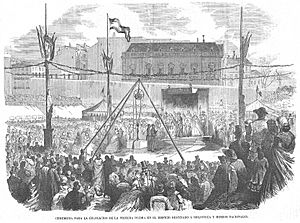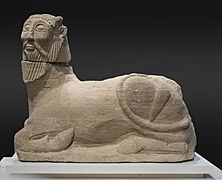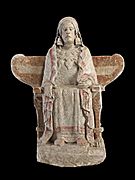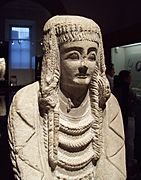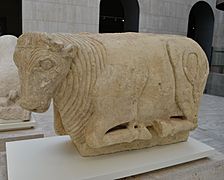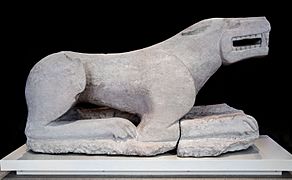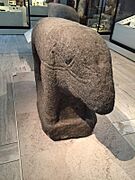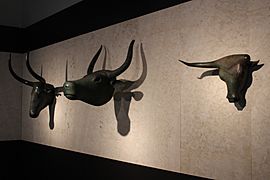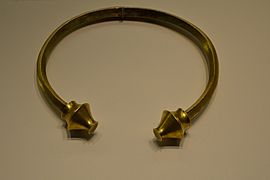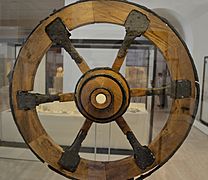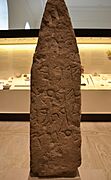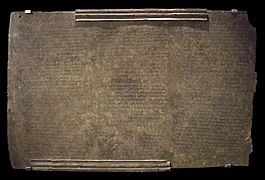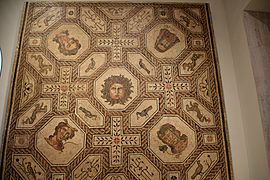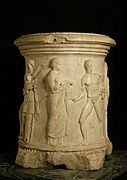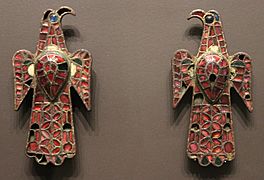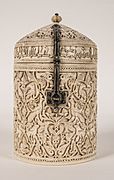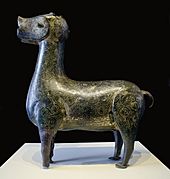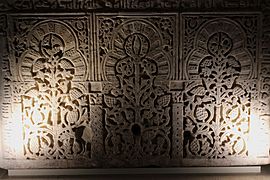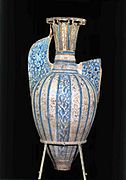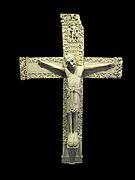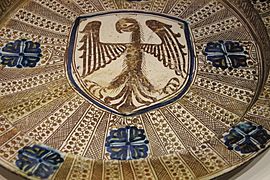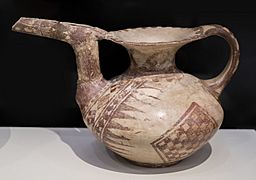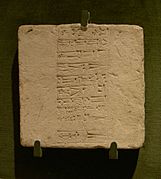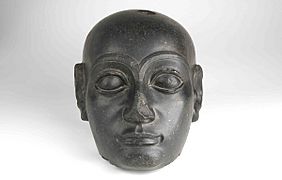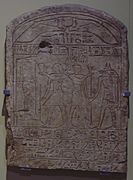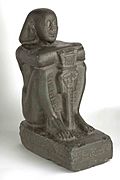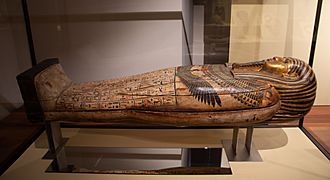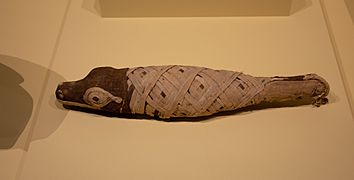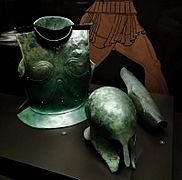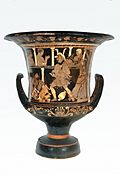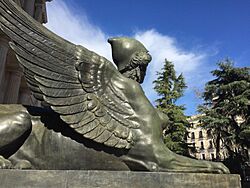National Archaeological Museum (Madrid) facts for kids
| Museo Arqueológico Nacional | |
 |
|
 |
|
| Established | 20 March 1867 |
|---|---|
| Location | Calle de Serrano, 13, Madrid, Spain |
| Type | Archaeology museum |
| Visitors | 499,300 (2019) |
| Public transit access | |
| Official name: Museo Arqueológico Nacional | |
| Type | Non-movable |
| Criteria | Monument |
| Designated | 1962 |
| Reference no. | RI-51-0001373 |
The National Archaeological Museum (also known as MAN) is a cool place in Madrid, Spain. It's an archaeology museum, which means it shows off amazing old objects. These objects help us learn about how people lived a long, long time ago.
The museum is on Calle de Serrano and shares its building with the National Library of Spain. It's one of Spain's most important national museums.
Contents
History of the Museum
The museum started way back in 1867. It was created by Queen Isabella II of Spain to keep important collections of coins, old artifacts, and art from Spanish kings and queens. Before this, people had thought about making a museum like it in 1830.
At first, the museum was in a different part of Madrid. But in 1895, it moved to its current home. This building was specially designed for the museum by an architect named Francisco Jareño. It took many years to build, from 1866 to 1892.
Later, in 1968, the museum got bigger with new renovation work. It closed for a big update in 2008 and opened its doors again in April 2014.
Over the years, some of the museum's collections were moved to other museums. For example, items from America went to the Museum of the Americas. Now, the museum mostly focuses on objects from the Iberian Peninsula (Spain and Portugal). These items cover a huge time period, from Prehistory to the Early Modern Age. The museum also has collections from Ancient Greece, Ancient Egypt, and the Near East.
What You Can See: Permanent Exhibition
When you visit the museum, you'll find many interesting things.
Outside the Museum
Right outside the museum, there's a cool replica of the Cave of Altamira. This copy was made in the 1960s. It shows the famous cave paintings exactly as they are in the real cave. It's like stepping back in time!
Inside the Main Building
You enter the museum on the basement level. From there, you can explore different time periods.
Early History: Protohistory
On the first floor, you'll find objects from the early history of the Iberian Peninsula. This includes items from groups like the Iberians, Celts, and Tartessians. You'll also see things from the Phoenicians and Punics who came to colonize the area.
A very special part of this section is the collection of Iberian sculpture. These are stone statues from southern and southeastern Spain. Some of the most famous ones include:
- The Lady of Elche
- The Lady of Baza
- The Lady of Galera
- The Bicha of Balazote
- The Bull of Osuna
- The Mausoleum of Pozo Moro
-
Iberian mausoleum of Pozo Moro.
Besides these sculptures, you can also see other cool items. These include bull heads from Costitx and the Lady of Ibiza, which is linked to the Punic civilization.
-
Punic Lady of Ibiza
-
The Priest of Cadiz.
Roman Spain: Hispania
The first floor also has a large collection of Roman artifacts from Spain. These items come from archaeological digs and special purchases. You'll see many mosaics on the floors and walls.
One important part of this collection is the Roman legal bronzes. These include the Lex Ursonensis, which are five bronze tablets found in the 1870s.
-
Mosaic of Winter, from Quintana del Marco
-
One of the slabs from the Lex Ursonensis
-
Mosaic of Medusa and the seasons from Palencia
Later Roman Times: Late Antiquity
Still on the first floor, you'll find items from the end of the Roman Empire in Spain. This section also covers the Visigothic Kingdom of Toledo and the Byzantine Empire.
Some amazing items here include:
- The Sarcophagus from Astorga
- The Visigothic Treasure of Guarrazar, which has the beautiful votive crown of Recceswinth.
-
Votive crown of Recceswinth
Medieval World: Al-Andalus
This area on the first floor shows objects from al-Andalus, which was the Muslim-ruled part of Spain. You can see:
- The pyxis of Zamora, a beautiful ivory box.
- The deer-like fountain from Medina Azahara.
- A marble font used for washing.
- An astrolabe made in Toledo.
- Two special vases from the Alhambra.
-
Astrolabe of ibn Said, made in 1067
Medieval World: Christian Kingdoms
On the second floor, you'll find items from the Christian kingdoms of Spain during the Middle Ages. This covers from about the 8th to the 15th century.
Look out for:
- The Crucifix of Ferdinand and Sancha, made of ivory.
- The praying statue of King Peter I of Castile, carved from alabaster.
-
Pottery from Manises
Ancient Near East
Also on the second floor is the section for the Ancient Near East. This includes pottery from Iran and a special Sumerian figure.
-
Brick from Girsu with cuneiform writing
Egypt and Nubia
The museum has a great collection from Ancient Egypt and Nubia. Many of these items are related to funerals, like mummies, amulets, and statues of gods. These pieces come from different time periods, from prehistory to Roman times.
-
Black basalt sculpture of horus.
Ancient Greece
The Greek collection includes items from mainland Greece, Ionia, and Sicily. You'll see bronze objects, pottery, sculptures, and jewelry. These pieces show Greek art from the Mycenaean period to the Hellenistic period.
-
Archaic period hoplite armor set.
-
Dog-headed rhyton.
Famous Artifacts to See
Here are some of the most famous and interesting objects you can find at the National Archaeological Museum:
- Prehistoric and Iberian
- Roman
- Medieval
- Pyxis of Zamora
- One of the Alhambra vases
See also
 In Spanish: Museo Arqueológico Nacional (España) para niños
In Spanish: Museo Arqueológico Nacional (España) para niños
- List of museums in Spain


